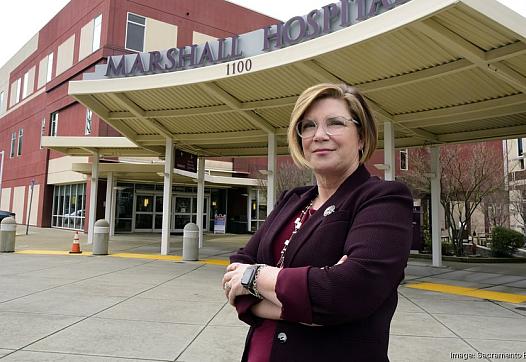Barton Memorial Hospital uses Tahoe tourist season to help pay for service to older, poorer residents
This project was originally published in Sacramento Business Journal with support from our 2022 Data Fellowship

Barton Memorial Hospital is the only hospital in the Lake Tahoe basin.
(Courtesy of Barton Health)
For many rural hospitals, their geography and demography seal their fate when it comes to their financial stability.
“The people that live in rural areas tend to be older, sicker and poorer than others,” said Peggy Wheeler, a rural hospital specialist with the California Hospital Association.
Those are the patients who tend to be on government health care — either Medicare, which covers seniors, or Medi-Cal, the state’s Medicaid program, which covers low-income families.
“In rural generally, you’re going to have a higher mix of government payers, sometimes as much as 60 or 70% of your income,” Wheeler said. “If those payers don’t cover your costs — and we know that Medicaid does not cover the cost of care, Medicare does a little bit better but is still not covering the cost of care — then the formula just doesn’t work over time. You’re going to be losing money.”
That is the case on the south shore of Lake Tahoe, where Barton Memorial Hospital serves some of the oldest and poorest areas in El Dorado County — which itself has a higher median age and lower median income than the state average.
“As a designated rural health care system, the composition of our patient population includes a significant number of Medi-Cal and Medicare patients — resulting in complex reimbursement rates,” Barton CEO Dr. Clint Purvance said, in a statement. “State-subsidized insurance programs often have low reimbursements and don’t always cover the costs of health care.”
In 2021, Barton got paid just 26% of what it cost to treat Medicare patients, a Business Journal analysis found, which represents a $39.8 million shortfall.
And yet, Barton tends to operate on higher margins than many of its rural counterparts — during the seven years of financial records included in the Business Journal’s analysis, it only lost money on operations once, in 2021, and never lost money overall over the course of a year.
“Unlike some rural areas, Lake Tahoe is also a tourist destination,” Purvance said. “During peak summer and winter months, Lake Tahoe can see a large influx of visitors who may have medical needs while visiting. Our health system is designed to scale up or down to meet the needs of the population we are serving, which extends outside of our local community.”
Barton has also invested heavily in orthopedics and sports medicine. In 2018 Barton Health opened the $15 million Barton Center for Orthopedics & Wellness, which centralizes the health system’s nationally known specialists in ski and snowboard injury treatment and rehabilitation under the same roof. Barton has a partnership with the U.S. Ski & Snowboard team to treat and train its athletes while they are in Tahoe.
“In making that investment in that physical therapy and recovery center, gives them another avenue for additional revenue for the community,” Wheeler said. “Makes it attractive.”
An analysis of Barton’s quarterly reports from 2015 top 2022 shows that the hospital sees a spike in patients during the peak of the summer and the peak of the winter tourist seasons each year.
On average, the hospital sees a 10% jump in patients in the winter from the spring, and a 4% jump in patients again in the summer.
“We call them a resort hospital in that they get a bulge of people that come to see them in the wintertime,” Wheeler said. “And the winters sustain them in the spring and the summer.”
And many of those tourists who wind up in the hospital are covered with private insurance — typically the only type of coverage that consistently pays hospitals what it actually costs to treat patients.
In the winter, Barton sees a 66% increase in the number of patients coming in with traditional commercial insurance from the spring, and a 36% increase in the summer over the spring.
That contributes to a 12% bump in overall patient revenue in the winter — an average of $4.2 million — and 5% in the summer — an average of $1.9 million.
“Barton might be better situated than some of the more tiny remote critical access hospitals, because Barton at least does have that season whereby they know they’re going to see a pretty big influx of patients,” Wheeler said. “Those may be commercial payers, but even if not, the volume is going to help them sustain themselves in the more lean times.”


